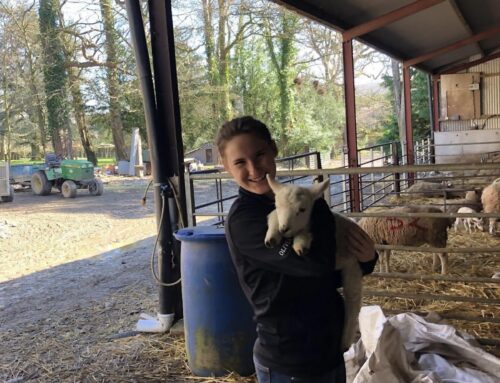 Over the summer, I spent most of my afternoon breaks with my friends by a lake in rural New Hampshire. Our spot, one that was popular with picnickers, was also frequented by a family of ducks. One of my friends would often toss them a handful of salt and vinegar chips, which were a flavor the ducks didn’t seem to like very much. Soon enough, instead of eating them plain, the ducks would pick the chips up and rinse them off in the lake before eating them. We all thought that was pretty smart. It turns out we weren’t the only ones who believed that ducks may have a capacity for higher thought.
Over the summer, I spent most of my afternoon breaks with my friends by a lake in rural New Hampshire. Our spot, one that was popular with picnickers, was also frequented by a family of ducks. One of my friends would often toss them a handful of salt and vinegar chips, which were a flavor the ducks didn’t seem to like very much. Soon enough, instead of eating them plain, the ducks would pick the chips up and rinse them off in the lake before eating them. We all thought that was pretty smart. It turns out we weren’t the only ones who believed that ducks may have a capacity for higher thought.
In a study conducted by the University of Oxford, mallard ducklings displayed the ability to interpret abstract relationships between shapes and colors. Newly hatched ducklings were shown two objects; some were shown objects that were the same (whether in shape or color) and others were shown objects that were different (whether in shape or color). The ducklings would imprint (a process in which some newborn animals bond to the first moving object they see) on this pair of objects and follow them closely, just as they would with their mothers. Later, when presented with new pairs of objects, three-quarters of ducklings would follow objects with the same relationship they had imprinted on. If they had imprinted on a pair of objects that were the same, the duckling would follow the new pair of objects that were the same, likewise with different. This demonstrated that the ducklings understood the concepts of “same” and “different.” Scientists theorized that ducklings use this abstract thinking to distinguish their mother from other objects in tough situations.
The ability to comprehend abstract concepts has been shown in other animals, but only after reinforcement. The ducklings did not require reinforcement to display the behavior. Crows are another bird species that have demonstrated abstract thinking; they are able to comprehend analogous relationships. In a study by Moscow State University and the University of Iowa, crows demonstrated the ability to complete analogies. Similar to the duckling experiment, the crows had to determine the relationship between colors and shapes. The birds were presented with cups covered by cards. Each card displayed either a similar or different relationship. If the crows chose correctly, they uncovered a cup containing a food reward. Not only were crows able to complete this task, but they were also able to do it without training.
These studies prove that abstract thinking is not exclusively a human one. Other animals have the ability to think abstractly. So the next time you see a group of ducklings, you may want to make way—those little guys are a lot smarter than we give them credit for.
Did You Know?
Austrian scientist Konrad Lorenz studied the process of imprinting in the 1930s. He discovered that young ducks and geese could imprint on anything they were exposed to in the first days of life, from objects to people. He theorized that imprinting evolved to help young birds recognize their parents and stick close to them for safety.
Image credit: Alexey Gomankov




